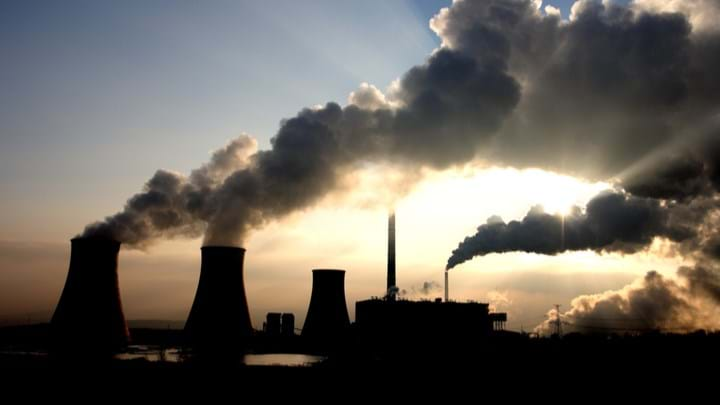EPA’s new energy plan gives boost to coal-fired plants

THE US Environmental Protection Agency (EPA) has introduced a new energy rule that will extend the life of coal-fired plants through improved heat rate efficiency.
The new rule is known as the Affordable Clean Energy (ACE) rule and it will replace an Obama-era rule known as the Clean Power Plan (CPP). The CPP set state-specific targets to reduce emissions from the power sector but was never implemented as it was almost immediately put on hold by the courts.
The best system of emission reduction
The CPP defined the best system of emission reduction (BSER) through three “building blocks”. The first was to improve the heat rate at coal-fired steam generating units, the second was to use alternative fuels such as natural gas, and the third was to increase renewable energy generation. However, the EPA’s repeal of the CPP has now concluded that the second and third building block should not form a part of the BSER as they cannot be applied directly at the emissions source.
The ACE includes a list of candidate technologies to improve heat rate efficiency but discounts carbon capture and storage, which formed part of the CPP, concluding that: “CCS is not the BSER for emissions of CO2 from existing coal-fired EGUs (electric utility generating units) – nor does it constitute a component of the BSER.”
The ACE does not set any specific emissions reductions targets, instead allowing states to decide themselves on how to regulate power plant emissions. States will have three years to develop approaches to comply with the new efficiency requirements and it could be up to six and a half years before rules are put in place. States can factor in the remaining useful life of a plant and avoid making any efficiency amendments if the plant is due to be shut down in the near future and therefore could not recoup the costs.
“In this rule, the EPA has accomplished what eluded the prior administration: providing a clear, legal pathway to reduce emissions while preserving states’ authority over their own grids,” said Hal Quinn, President and CEO of the National Mining Association.
A senior EPA official told newspaper The Hill that the result of the more relaxed rule could see individual coal plants increase their emissions, but overall the emissions are expected to go down. The ACE is expected to reduce emissions by 11m t by 2030, compared to the CPP which aimed to reduce emissions by 415m t by 2030. In addition, a study published in Environmental Research Letters calculated that 28% of coal plants would have higher emissions in 2030 compared to having no policy at all.
Health benefits
EPA’s own analysis from August 2018 said that the ACE would increase pollution and cause additional illnesses and deaths relative to the CPP. It estimated that additional premature deaths due to particulate matter would number 240–1,400 in 2030. It also expected 96,000 more cases of asthma. The EPA’s current analysis now claims that the ACE will actually avoid 50–122 premature deaths in 2030, and avoid 14,000 cases of asthma. This is done by comparing the number of premature deaths to the scenario of having no policy, rather than comparing it to the CPP as was done before.
“Today, we are delivering on one of President Trump’s core priorities: ensuring the American public has access to affordable, reliable energy in a manner that continues our nation’s environmental progress,” said EPA Administrator Andrew Wheeler, a former coal industry lobbyist. “Unlike the Clean Power Plan, ACE adheres to the Clean Air Act and gives states the regulatory certainty they need to continue to reduce emissions and provide a dependable, diverse supply of electricity that all Americans can afford.”
Despite the Trump administration’s attempts to prop up the coal industry, coal plants are becoming increasingly economically unviable compared to cleaner forms of energy, and 289 of 530 coal plants have been shut down since 2011. In addition, renewables now make up more of US power capacity than coal according to the Federal Energy Regulatory Commission, and an analysis by Energy Innovation has shown that local wind and solar projects could replace 74% of the US coal fleet with an immediate cost saving for customers.
Rachel Cleetus, lead economist and policy director of the Climate and Energy Program at the Union of Concerned Scientists, said: “This rule will do nothing to stem the overall trend of coal plant retirements which are at an all-time high because of market pressures, including from cheap natural gas.”
Fred Krupp, President of the Environmental Defense Fund, said: “This so-called Affordable Clean Energy rule fails to protect Americans from the increasing cost of climate change and does nothing to support clean energy. It is a disgrace. States and power companies across the country are already reducing climate pollution, in some cases by much more than the Clean Power Plan called for. We should seize on and build from this clean energy momentum – but instead the Trump administration’s rollback will pull us down a failed and dangerous path. EDF will do everything in our power to fight it.”
Recent Editions
Catch up on the latest news, views and jobs from The Chemical Engineer. Below are the four latest issues. View a wider selection of the archive from within the Magazine section of this site.




